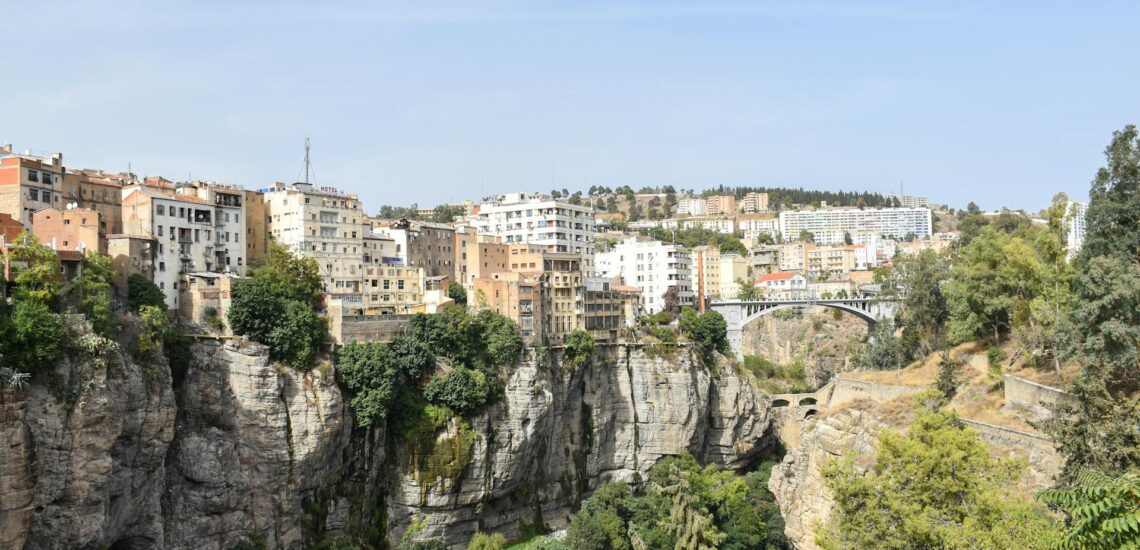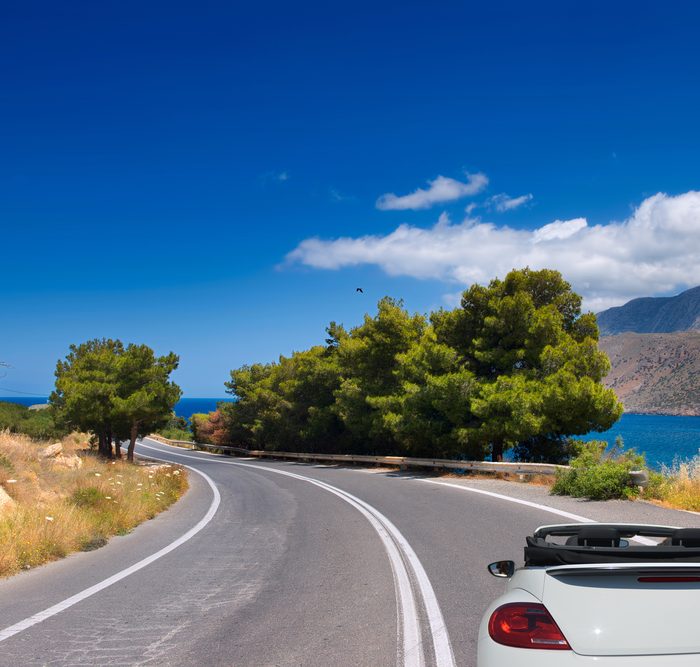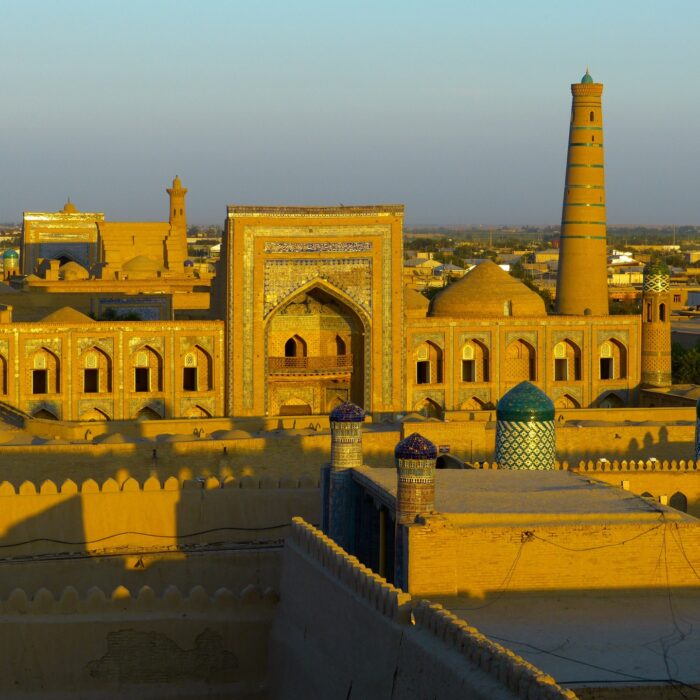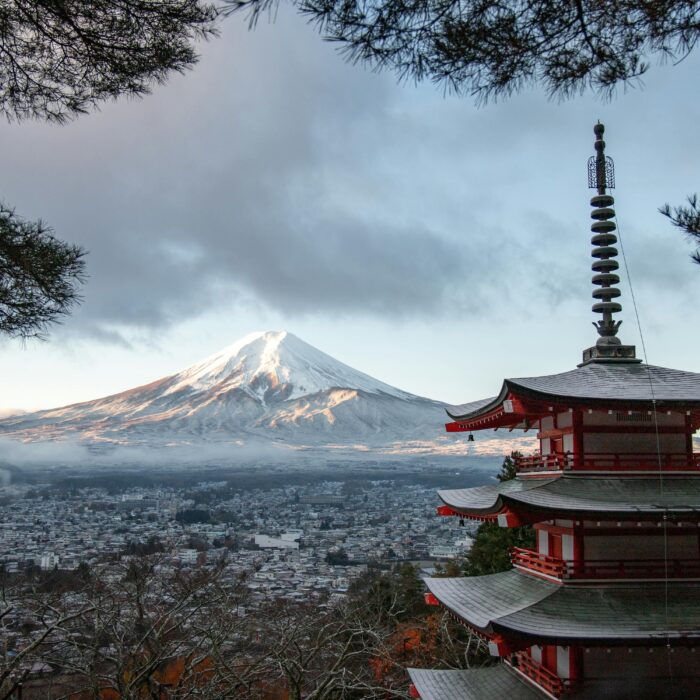Informazioni rapide sull’Algeria:
- Popolazione: Circa 44 milioni di persone.
- Capitale: Algeri.
- Città più grande: Algeri.
- Lingue ufficiali: Arabo e berbero (tamazight); è diffuso anche il francese.
- Valuta: Dinaro algerino (DZD).
- Governo: Repubblica unitaria semipresidenziale.
- Religione principale: Islam, prevalentemente sunnita.
- Geografia: Situata in Nord Africa, confina a nord con il Mar Mediterraneo, a est con la Tunisia e la Libia, a sud con il Niger e il Mali, a ovest con la Mauritania, il Sahara occidentale e il Marocco.
Fatto 1: l’Algeria è il Paese più grande dell’Africa
L’Algeria ha il primato di essere il Paese più grande dell’Africa per superficie, con una superficie di circa 2,38 milioni di chilometri quadrati (919.595 miglia quadrate). Il suo vasto territorio abbraccia diverse caratteristiche geografiche, tra cui il vasto deserto del Sahara a sud, le montagne dell’Atlante a nord e le fertili pianure costiere lungo il Mar Mediterraneo.
Le dimensioni dell’Algeria la collocano al decimo posto tra i Paesi più grandi del mondo, superando altre importanti nazioni africane come la Repubblica Democratica del Congo e il Sudan. Questo vasto territorio comprende una serie di climi e paesaggi, dalle condizioni calde e aride del deserto nel Sahara alle temperature più moderate delle regioni montuose.
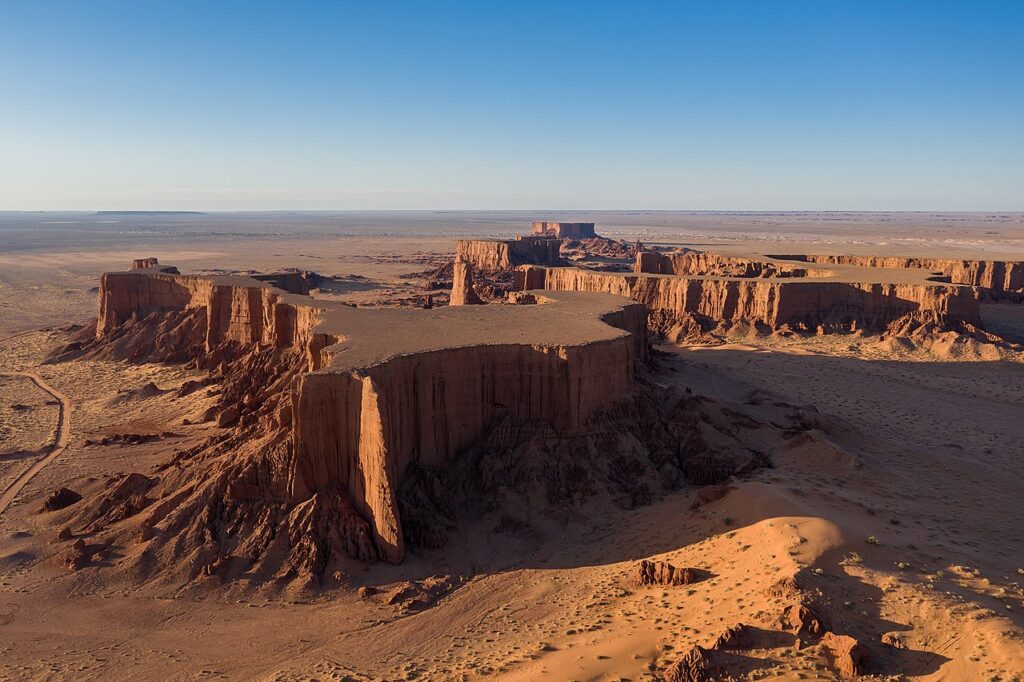
Fatto 2: il territorio dell’Algeria è stato governato da molti imperi in passato
Nel corso della sua storia, il territorio dell’attuale Algeria è stato governato da diversi imperi e civiltà, ognuno dei quali ha lasciato un segno distinto nel suo paesaggio culturale, politico e architettonico.
- Antichi imperi: La regione era abitata da tribù berbere e civiltà risalenti all’antichità, tra cui i Numidi e i Cartaginesi. Cartagine, una potente città-stato fenicia, esercitava la sua influenza sulle zone costiere prima del conflitto con Roma.
- La dominazione romana: L’Algeria entrò a far parte dell’Impero romano nel II secolo a.C., con il nome di Numidia e successivamente come parte della provincia d’Africa. L’influenza romana ha lasciato siti archeologici significativi come Timgad e Djemila, che mostrano rovine romane e pianificazione urbana ben conservate.
- Periodo vandalo e bizantino: Dopo la caduta dell’Impero romano d’Occidente, l’Algeria passò sotto il controllo dei Vandali e successivamente dell’Impero bizantino, che mantenne il controllo sulle regioni costiere.
- Califfati islamici: Nel VII secolo d.C., gli eserciti arabo-musulmani conquistarono l’Algeria, introducendo l’Islam e stabilendo varie dinastie islamiche come gli Omayyadi, gli Abbasidi e i Fatimidi. La dominazione islamica trasformò l’Algeria dal punto di vista culturale e politico: città come Algeri divennero centri di spicco della civiltà islamica.
- Colonizzazione ottomana e francese: L’Algeria passò sotto il dominio ottomano nel XVI secolo, seguito dalla colonizzazione francese nel XIX secolo. La dominazione francese durò fino a quando l’Algeria ottenne l’indipendenza nel 1962, dopo una lunga guerra d’indipendenza.
- Algeria indipendente: Da quando ha ottenuto l’indipendenza, l’Algeria si è evoluta politicamente e culturalmente, cercando di forgiare un’identità nazionale moderna pur preservando il suo ricco patrimonio storico.
Fatto 3: l’Algeria vanta 7 siti del Patrimonio mondiale dell’UNESCO
L’Algeria vanta 7 siti dichiarati Patrimonio dell’Umanità dall’UNESCO, che mettono in mostra il suo ricco patrimonio storico e culturale.
- Al Qal’a di Beni Hammad – Situato sulle montagne Hodna, questo sito comprende le rovine della prima capitale della dinastia Hammadid, risalente all’XI secolo. Presenta resti monumentali che testimoniano la grandezza della città medievale.
- Djémila – Conosciuta anche come Cuicul, Djémila è un’antica città romana nel nord-est dell’Algeria. Conserva eccezionali rovine romane, tra cui fori ben conservati, templi, basiliche, archi di trionfo e case con splendidi pavimenti a mosaico.
- Valle del M’zab – Questo paesaggio culturale ospita un gruppo di cinque città-oasi (Ghardaïa, Beni Isguen, Bou Noura, El Atteuf e Melika), abitate dall’XI secolo. Le città sono costruite con metodi tradizionali e si sono adattate al duro ambiente desertico.
- Tassili n’Ajjer – Situato nel deserto del Sahara, Tassili n’Ajjer è noto per la sua arte rupestre preistorica che raffigura antiche attività umane, che vanno dal 12.000 a.C. al 100 a.C.. L’arte comprende scene di caccia, danza e rituali, che forniscono informazioni sulla vita sahariana primitiva.
- Timgad – Fondata dall’imperatore Traiano intorno al 100 d.C., Timgad è una città coloniale romana ben conservata sui monti Aures. La sua pianta a griglia, tipica dell’urbanistica romana, comprende il foro, i templi, l’anfiteatro e le terme, che rappresentano un esempio di architettura civica romana.
- Tipasa – Situata sulla costa dell’Algeria, Tipasa è un’antica stazione commerciale punica conquistata da Roma e trasformata in una base strategica per la conquista dei regni della Mauritania. Contiene un insieme unico di rovine fenicie, romane, paleocristiane e bizantine.
- Kasbah di Algeri – La Kasbah è un esempio architettonico unico di struttura urbana storica di Algeri, risalente al periodo ottomano. Comprende strade strette, piazze, moschee e palazzi ottomani, che permettono di conoscere il passato ottomano dell’Algeria.
Nota: se intendete visitare l’Algeria, verificate se è necessaria una patente internazionale in Algeria per noleggiare e guidare un’auto.
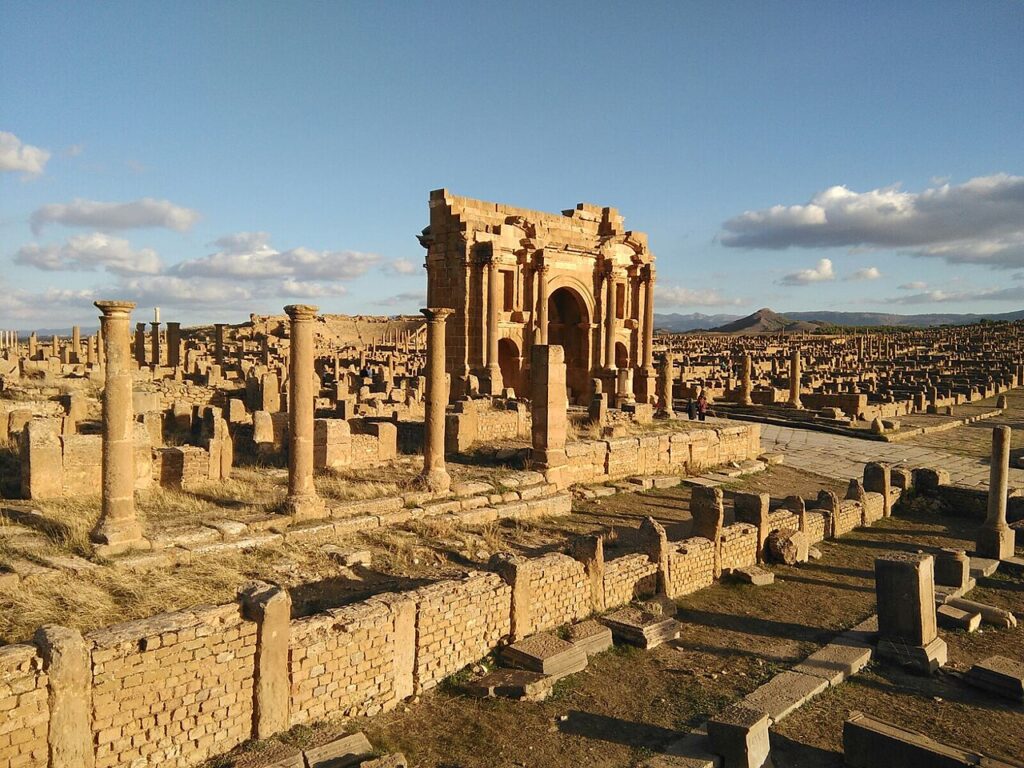
Fatto 4: la maggior parte del Paese è costituita dal deserto del Sahara
Il Sahara, che copre circa l’80% della superficie totale del Paese, si estende su vasti tratti delle regioni meridionali e sudorientali dell’Algeria. Questo paesaggio arido è caratterizzato da immense dune di sabbia, altopiani rocciosi e una vegetazione rada adattata alle condizioni del deserto.
Il deserto del Sahara in Algeria non è solo notevole per le sue dimensioni, ma anche per le diverse formazioni geologiche e gli antichi siti culturali. Comprende il Parco nazionale del Tassili n’Ajjer, un sito del patrimonio mondiale dell’UNESCO rinomato per l’arte rupestre preistorica e le drammatiche formazioni di arenaria. Il clima e il terreno estremi del deserto rappresentano una sfida significativa per l’insediamento umano, con la maggior parte degli insediamenti raggruppati intorno alle oasi e lungo la fascia costiera settentrionale, dove prevalgono condizioni più favorevoli.
Fatto 5: L’animale nazionale dell’Algeria è la volpe Fennec
L’animale nazionale dell’Algeria è la volpe Fennec (Vulpes zerda), una piccola specie di volpe notturna adattata agli ambienti desertici. Conosciuta per le sue caratteristiche orecchie grandi che aiutano a dissipare il calore e per i suoi sensi acuti, la volpe di Fennec è particolarmente adatta a sopravvivere nelle dure condizioni del deserto del Sahara, che copre gran parte del territorio algerino.
Queste volpi sono note per la loro pelliccia color sabbia, che le mimetizza con le sabbie del deserto, e si nutrono principalmente di piccoli roditori, insetti e piante. La loro capacità di resistere alle alte temperature e di conservare l’acqua le rende un simbolo iconico dell’ecologia desertica dell’Algeria e della sua capacità di resistenza in ambienti difficili.
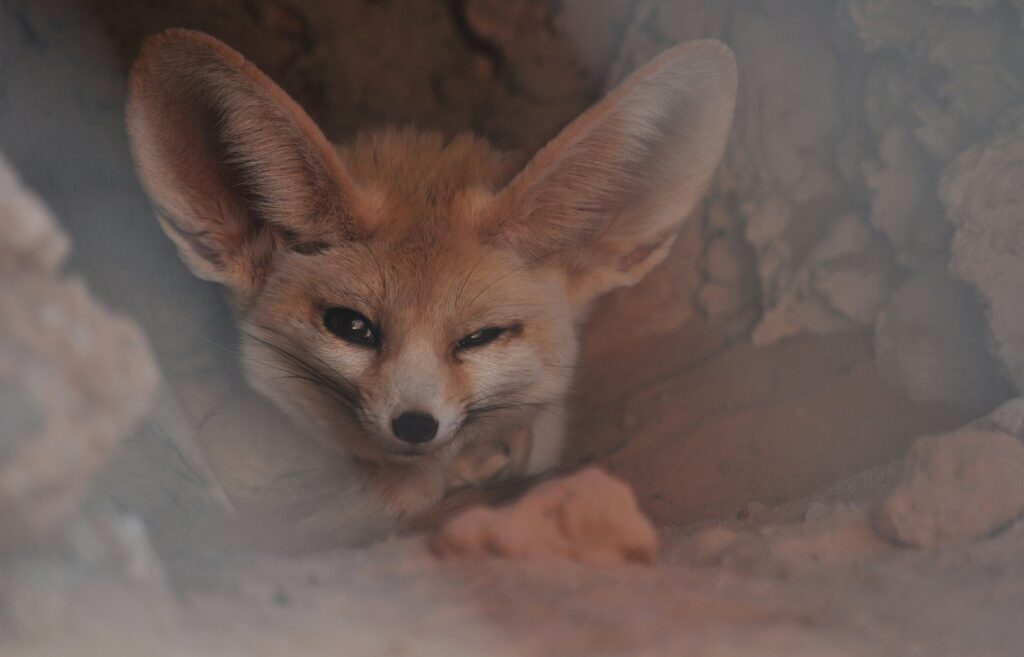
Fatto 6: l’Algeria possiede grandi riserve di petrolio e gas naturale
L’Algeria possiede importanti riserve di petrolio e gas naturale, che svolgono un ruolo cruciale per l’economia del Paese e per i mercati energetici globali. Ecco alcuni fatti chiave sulle riserve di petrolio e gas dell’Algeria:
- Riserve di petrolio: L’Algeria è il terzo produttore di petrolio dell’Africa e possiede notevoli riserve petrolifere accertate. Secondo stime recenti, le riserve petrolifere accertate dell’Algeria ammontano a circa 12,2 miliardi di barili. La produzione petrolifera del Paese è storicamente incentrata sul giacimento di Hassi Messaoud, uno dei più grandi dell’Africa.
- Riserve di gas naturale: L’Algeria è uno dei principali attori del mercato mondiale del gas naturale e si colloca tra i primi esportatori di gas naturale liquefatto (GNL). Il Paese vanta importanti riserve di gas naturale accertate, stimate in circa 4,5 trilioni di metri cubi. I principali giacimenti di gas naturale includono Hassi R’Mel, In Salah e Gassi Touil.
- Importanza economica: Le esportazioni di petrolio e gas costituiscono la spina dorsale dell’economia algerina, rappresentando una parte sostanziale delle entrate statali e dei proventi delle esportazioni. Il settore energetico del Paese ha attratto notevoli investimenti stranieri e svolge un ruolo fondamentale nello sviluppo economico del Paese.
Fatto 7: l’Algeria è famosa per i suoi datteri
L’Algeria gode di un’ottima reputazione per la produzione di datteri, che non sono solo un alimento base della cucina algerina, ma anche un’importante esportazione agricola. I vasti palmeti di datteri del Paese, in particolare nel deserto del Sahara settentrionale e in altre regioni adatte, producono un’ampia varietà di datteri noti per il loro sapore ricco e il loro valore nutrizionale. Tra questi, Deglet Nour, Medjool e Ghars sono particolarmente rinomati per la loro qualità e il loro gusto.
Culturalmente, i datteri occupano un posto speciale nelle tradizioni algerine. Sono comunemente utilizzati nella preparazione di piatti e dessert locali, a dimostrazione della loro versatilità e importanza nelle pratiche culinarie quotidiane. Inoltre, i datteri svolgono un ruolo significativo nei contesti sociali e religiosi, spesso serviti come gesto di ospitalità durante le riunioni e le feste.
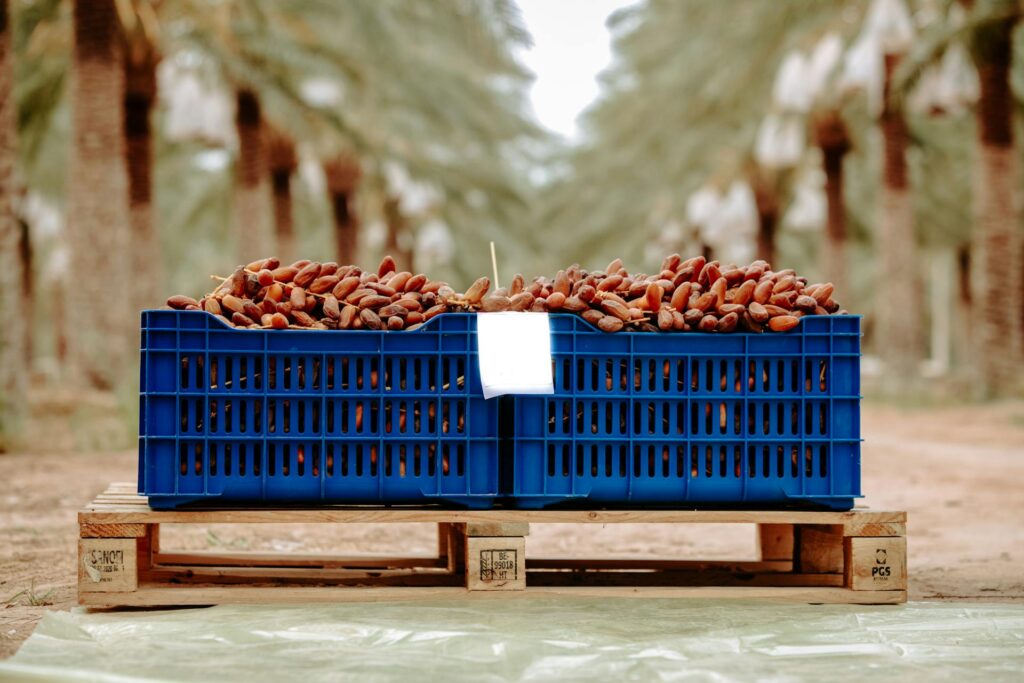
Fatto 8: gli algerini bevono molto tè
Gli algerini hanno una forte tradizione di consumo di tè durante la giornata, e il tè alla menta è la varietà più popolare. Questo tè tradizionale, conosciuto localmente come “atay b’nana” o semplicemente “atay”, si ottiene mettendo in infusione in acqua bollente foglie di tè verde con foglie di menta fresca e abbondanti quantità di zucchero.
Il consumo di tè in Algeria va oltre il semplice rinfresco: è una pratica culturale che favorisce il legame comunitario e l’ospitalità. Servire il tè è un gesto di calore e accoglienza nelle case algerine, offerto agli ospiti in segno di rispetto e amicizia. Spesso è accompagnato da conversazioni, spuntini come datteri o pasticcini e talvolta anche da una fumata da una pipa ad acqua tradizionale (shisha o narghilè).
Oltre al suo significato sociale, il tè svolge anche un ruolo in contesti religiosi e cerimoniali. Durante il Ramadan, il mese del digiuno, il tè è particolarmente apprezzato come mezzo per rompere il digiuno al tramonto (iftar).
Fatto 9: Gli algerini amano il calcio
L’amore dell’Algeria per il calcio è evidente nel fervore che circonda le partite locali, le competizioni internazionali e i tornei più importanti come la Coppa d’Africa e la Coppa del Mondo FIFA. Le partite della nazionale algerina, nota come Volpi del Deserto, evocano l’orgoglio e la solidarietà nazionale, attirando un enorme sostegno da parte dei tifosi che seguono il loro cammino con incessante dedizione.
L’influenza di questo sport si estende al di là del campo, plasmando le interazioni sociali, le discussioni e a volte anche il discorso politico. Gli algerini si riuniscono nei caffè, nelle case e nelle piazze per guardare insieme le partite, celebrando le vittorie e commiserando le sconfitte come un’esperienza collettiva.
L’Algeria ha prodotto giocatori di talento che hanno lasciato il segno nei campionati nazionali e nei club internazionali, alimentando ulteriormente la passione della nazione per il calcio. Questi atleti sono modelli e fonti di ispirazione per i giovani aspiranti calciatori di tutto il Paese.
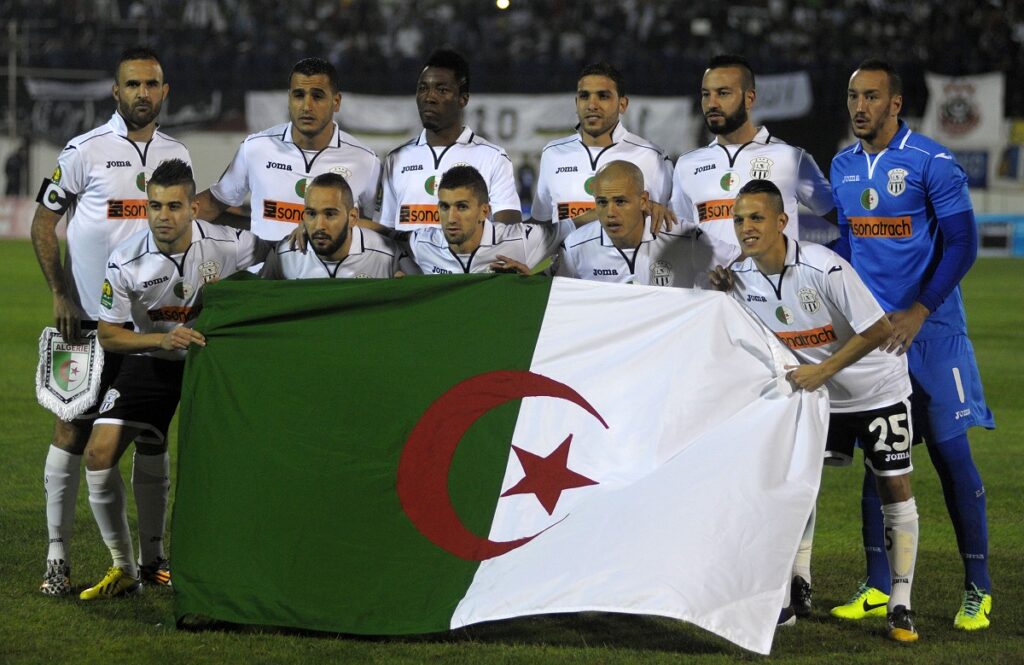
Fatto 10: l’Algeria è il secondo Paese africano libero dalla malaria
Il successo dell’Algeria nell’eliminazione della malaria può essere attribuito a diversi fattori. Le solide iniziative di sanità pubblica, tra cui la distribuzione capillare di zanzariere trattate con insetticidi, i programmi di irrorazione residua interna e l’efficace gestione dei casi, hanno svolto un ruolo cruciale nella riduzione della trasmissione della malaria. La solida infrastruttura sanitaria del Paese, sostenuta da partnership governative e internazionali, ha facilitato la diagnosi e il trattamento rapido dei casi di malaria, contribuendo al calo complessivo dell’incidenza della malaria.

Pubblicato Giugno 29, 2024 • 10m da leggere

